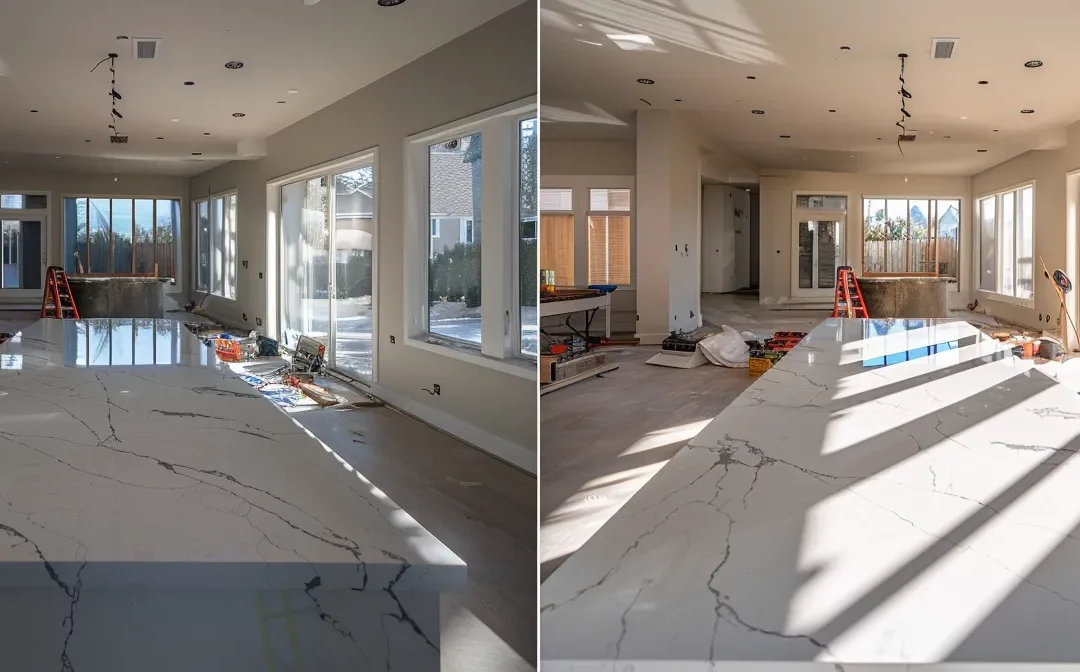Table Of Contents:
- Key Takeaways
- Understanding Quartz for Benchtop Resurfacing
- The Benefits of Using Quartz in Your Kitchen
- Environmental Advantages of Quartz Benchtops
- Comparing Quartz With Other Top Benchtop Materials
- Comparing Quartz With Other Top Benchtop Materials
- Steps to Resurface Your Benchtop With Quartz
- Real-Life Success Stories of Quartz Resurfacing
- Conclusion
Are you tired of your kitchen benchtop looking dull and outdated? Quartz offers a modern and stylish solution for resurfacing your kitchen surfaces. This article will explore the benefits of using quartz, including its durability and aesthetic appeal. You’ll also learn about the environmental advantages of quartz, how it compares to other materials, and real-life success stories of quartz resurfacing. By the end, you’ll understand how quartz can transform your space while addressing common concerns about maintenance and appearance. If you’re looking for a practical upgrade, this guide is for you.
Key Takeaways
- quartz offers superior durability and low maintenance compared to other materials like granite and marble
- the non-toxic nature of quartz surfaces promotes better indoor air quality for your home
- quartz surfaces can be customized in various colors and designs to match your decor
- upgrading to quartz enhances both the aesthetics and the value of your home
- simple care and cleaning ensure quartz surfaces maintain their appeal over time
Understanding Quartz for Benchtop Resurfacing
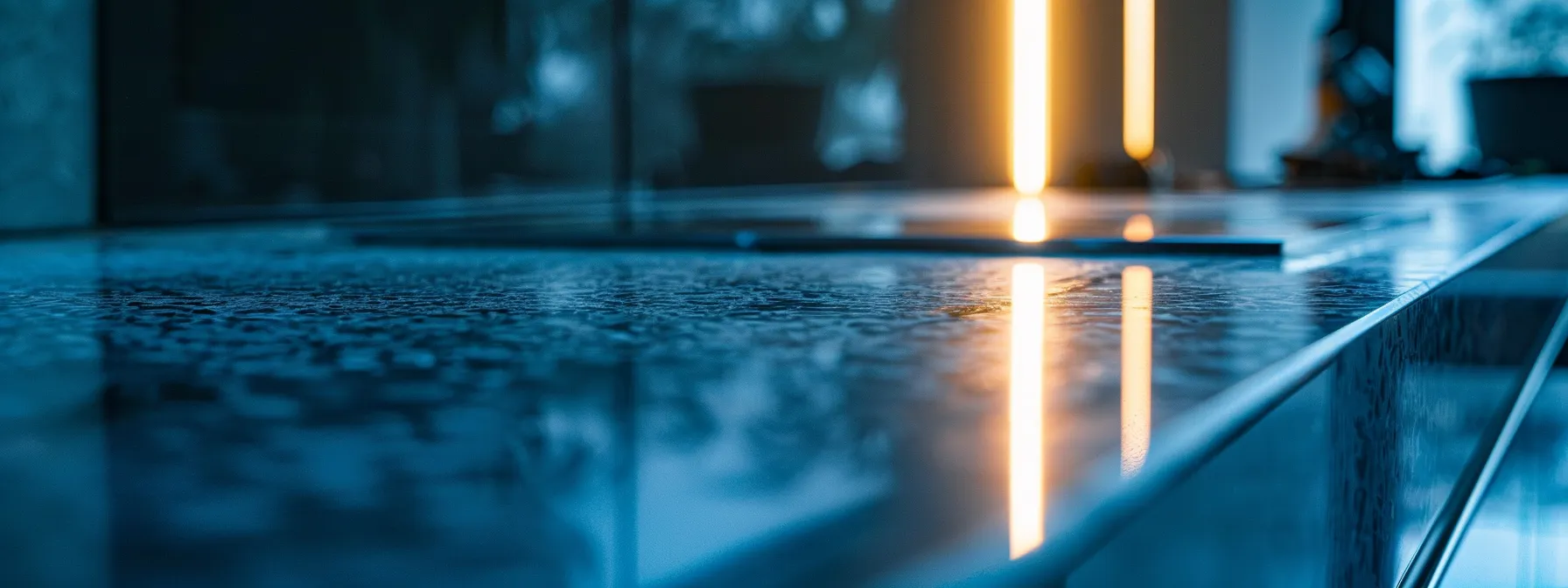
Quartz boasts key properties that make it an ideal choice for benchtop resurfacing. You will learn how quartz compares to other materials, considering factors like durability and maintenance. The process of creating quartz surfaces will also be discussed on the Fimagine Website, highlighting the role of components such as primer, sawdust, plywood, metal, and lamination in crafting high-quality finishes.
Key Properties of Quartz That Make It Ideal
Quartz surfaces excel due to their exceptional durability, making them an ideal choice for benchtop resurfacing. Unlike materials like Formica, quartz resists scratching and chipping, ensuring a long-lasting finish that can withstand daily wear and tear. You will appreciate how this robust material remains intact even under harsh conditions, providing you with confidence in your investment.
Another significant advantage of quartz is its low maintenance requirements. When you opt for quartz, you avoid the concerns that come with other surfaces like maple, which often requires more care. Regular cleaning with a mild cleaner keeps quartz surfaces looking fresh without the need for additional finishing touches, allowing you to save time and effort over the years.
Furthermore, quartz surfaces can be customized in various colors and designs, opening up endless possibilities for your project’s aesthetics. For instance, you can apply acrylic paint techniques to match your decor. This versatility ensures that your benchtop can blend seamlessly with your kitchen or bathroom design, while also making it easy to use tools like a vise without worrying about damaging the surface.
How Quartz Compares to Other Resurfacing Materials
When comparing quartz to resurfacing materials like soapstone and plaster, you will find significant advantages in durability and maintenance. Soapstone is softer and can scratch easily, which may require more frequent upkeep. In contrast, quartz resists scratching and chipping, ensuring a long-lasting surface that withstands the rigors of a busy bathroom or kitchen environment.
Another consideration is how each material performs in terms of installation and repair. Woodworking projects may involve multiple steps with materials like plaster, often requiring sanding and refinishing over time. Quartz, however, allows for a simpler installation and is easier to clean if repairs are needed, eliminating the time-consuming processes associated with traditional resurfacing methods.
Moreover, the aesthetic versatility of quartz sets it apart from other options. While plaster can provide a smooth finish, it lacks the wide variety of colors and patterns available with quartz. You will appreciate being able to choose a quartz design that fits your style without compromising on the surface’s functional benefits, making it a preferred choice for enhancing the look of your bathroom or kitchen:
- Durability: Stands up against scratching and chipping.
- Maintenance: Easy to clean and care for compared to soapstone and plaster.
- Installation: Simplified process with fewer steps and repairs.
- Aesthetic Variety: Wide range of colors and patterns available.
The Process of Creating Quartz Surfaces
The process of creating quartz surfaces begins with the careful selection of high-quality components. You will find that the base materials typically include ground quartz, pigments for color, and an epoxy resin that acts as a binding agent. This combination ensures a solid and durable surface, ideal for home improvement projects, especially in kitchens and bathrooms.
Once the materials are gathered, they are mixed thoroughly to achieve a uniform consistency. This mixture is then poured into a mold, where it is compressed to eliminate any air bubbles and enhance strength. Using a solvent-based method can improve the bonding between the components, further ensuring the durability that quartz surfaces are known for.
After the initial curing period, the quartz surface is removed from the mold and undergoes additional processing. This may include sanding and polishing to achieve the desired finish. You will appreciate that these steps not only enhance the aesthetic appeal of the surface, making it an attractive option compared to traditional materials like oak or other lumber, but also contribute to its long-lasting performance in your home.
Quartz offers strength and beauty, making it a wise choice for your kitchen. Let’s explore the benefits that come with using quartz in your space.
The Benefits of Using Quartz in Your Kitchen
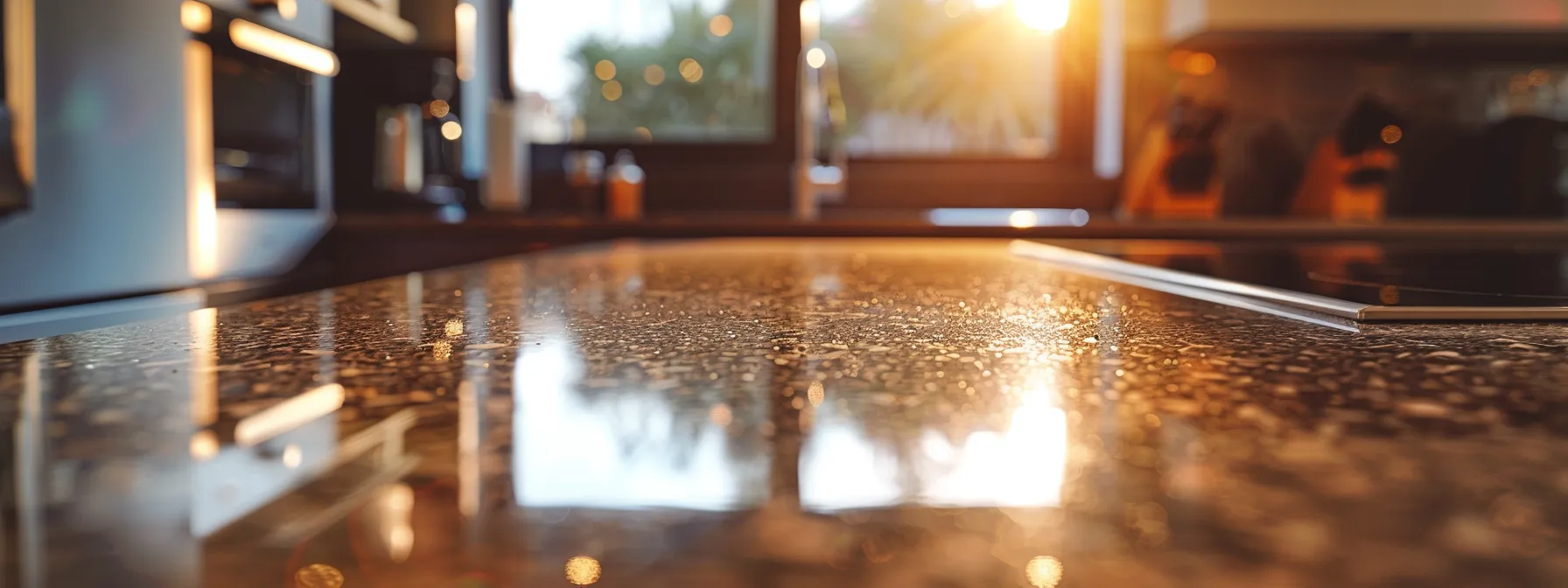
Quartz countertops offer significant benefits for your kitchen, enhancing durability and longevity while providing a high-end look without the high cost typically associated with granite. Designed for busy households, quartz requires easy maintenance, freeing up your time for other tasks. Additionally, the wide range of colors and designs available allows you to select options that suit your workbench and chest of drawers perfectly.
Enhancing Durability and Longevity
Quartz surfaces significantly enhance the durability and longevity of your kitchen countertops. When compared to traditional materials like concrete or wood, quartz resists scratches and chips remarkably well, offering a robust option that can handle daily use. This strength means your countertops will maintain their appearance and functionality even in a busy kitchen environment.
Additionally, the smooth finish of quartz allows for easy cleaning, which is essential for maintaining a hygienic kitchen. You can effortlessly wipe down the surface with a mild cleaner, ensuring that it stays looking fresh and new. With the proper maintenance, including the occasional use of a paintbrush to apply a new coat of protective sealant, your quartz surfaces can last for years, making them a worthwhile investment for your kitchen cabinets and countertops.
Moreover, quartz‘s ability to retain its color and resist stains makes it an ideal choice for aesthetic purposes. Unlike some materials, quartz won’t dull or fade over time, allowing you to enjoy the vibrant colors and intricate patterns you’ve selected. This quality not only adds visual appeal to your kitchen space but also ensures that your countertops remain a striking centerpiece, aligning perfectly with your design vision. Here’s an overview of the benefits of using quartz for kitchen surfaces:
Achieving a High-End Look Without the High Cost
Choosing quartz for your kitchen can provide the luxury look you desire without straining your budget. This material mimics the appearance of expensive stone countertops, offering a high-end finish that enhances the overall design. Imagine a striking quartz surface that coordinates perfectly with your sink and cabinetry, adding elegance to your cooking space.
Despite its upscale appearance, quartz surfaces are practical and resilient. When properly finished with a polyurethane seal, they resist wear and tear, maintaining their beauty even in busy kitchens. You can tackle spills and messes with just a bit of effort—simply use a paper towel and a mild cleaner to keep your countertops looking pristine.
Your choice in quartz also allows for various colors and patterns, ensuring your kitchen reflects your personal style. You can select designs that complement your appliances and fixtures, creating a cohesive look without excessive costs. Considering these attributes, quartz serves as an ideal material for achieving that luxurious appearance you seek while being mindful of your budget:
Easy Maintenance for Busy Households
Quartz surfaces are designed for easy maintenance, making them a perfect fit for busy households. You can quickly wipe down the surface with a mild cleaner, ensuring that spills and messes are handled without hassle. Unlike tiles or other materials, quartz does not require the application of wax or specialized cleaning products, allowing you to spend less time on upkeep.
In your kitchen, using quartz means you won’t have to worry about scratches from a cutting board or damage from tools like a chisel when preparing meals. The durable nature of quartz ensures that it can handle everyday cooking activities effortlessly. This resilience allows you to maintain the sleek appearance of your countertops while focusing on your culinary pursuits.
When it comes to repairs, quartz surfaces simplify the process. If an adhesive is needed for minor fixes, it can be easily applied without extensive preparation. As a busy individual, you will appreciate how quartz minimizes the need for constant attention, making it a reliable choice for maintaining a stylish and functional kitchen.
Wide Range of Colors and Designs Available
One of the standout features of quartz surfaces is the wide range of colors and designs available to you. Whether you prefer a clean, polished plane that resembles classic marble, or a bold, colorful pattern that mimics the look of a butcher block, quartz can meet your design aesthetic. This versatility allows you to customize your kitchen in a way that truly reflects your personal style and complements your existing décor.
Additionally, quartz’s resistance to wear and tear makes it an ideal choice for busy kitchens. You’ll find that the vibrant colors and designs retain their beauty over time, even with regular use. Unlike some materials that may fade or scratch easily, quartz surfaces maintain their appearance, ensuring that your investment continues to enhance your kitchen for years to come.
Moreover, cleaning quartz surfaces is straightforward, even when it comes to spills involving acetone or other harsh substances. Regular maintenance involves simple wiping down with a mild cleaner, allowing you to enjoy your quartz surface without the worry of long-term damage. This ease of care, combined with the aesthetic appeal of a wide selection of designs, makes quartz a practical and attractive choice for any kitchen renovation.
Using quartz in your kitchen brings beauty and durability. But there’s more to it—let’s explore how quartz benchtops also help the environment.
Environmental Advantages of Quartz Benchtops
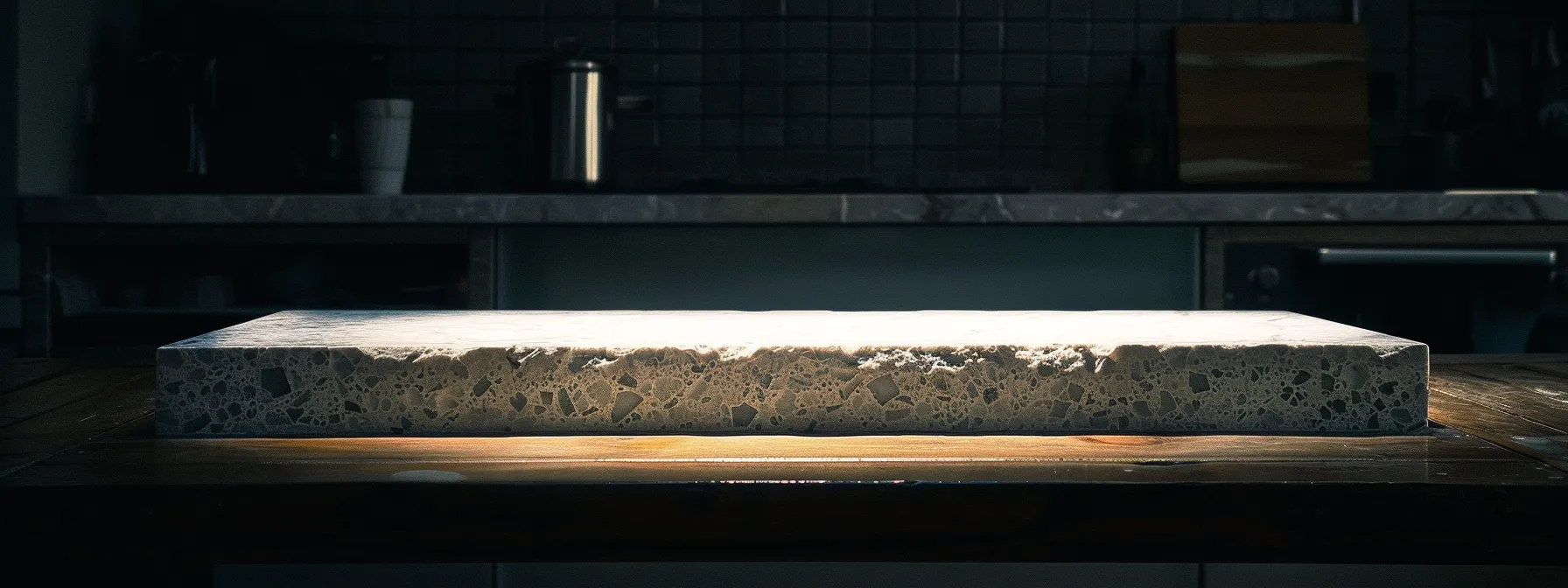
Quartz benchtops offer significant environmental advantages that enhance your renovation process. The sustainability in quartz manufacturing ensures a reduced impact on nature, while its non-toxic properties make it safe for your home. Additionally, quartz contributes to energy efficiency, making it an ideal choice for conscious homeowners. Each of these factors supports a healthier living environment, aligning with your goals for a responsible kitchen or bathroom update.
Sustainability in Quartz Manufacturing
The sustainability of quartz manufacturing plays a critical role in its appeal for benchtop resurfacing. The production process often utilizes recycled materials, which helps reduce waste. You can feel confident knowing that the choice of quartz surfaces contributes to a more environmentally friendly renovation by minimizing the demand for new raw materials, unlike traditional hardwood surfaces that may deplete forests and require extensive logging.
Furthermore, the non-toxic nature of quartz means that it does not release harmful substances into your home environment. This factor enhances indoor air quality, proving beneficial for households. Unlike certain finishes applied to hardwoods, which may contain volatile organic compounds, quartz ensures that your kitchen or bathroom remains a safe space for you and your family to enjoy.
Lastly, quartz surfaces are designed to withstand moisture, which can be a challenge for other materials. Their natural resistance prevents water damage and mold growth, allowing you to maintain a clean and healthy environment. The durability of quartz reduces the need for additional cleaning agents, such as steel wool or harsh chemicals, making it easier for homeowners to manage upkeep while being kind to the planet:
Non-Toxic and Safe for Your Home
One of the key benefits of quartz benchtops is their non-toxic nature. Unlike some natural materials, quartz surfaces do not emit harmful volatile organic compounds (VOCs) into your home. This attribute ensures that your kitchen or bathroom remains a safe environment, free from potentially hazardous substances that can affect air quality.
The resin used in quartz surfaces stabilizes the powder and slows down degradation while being safe for everyday use. Unlike traditional wood products that may require chemical finishes or treatments, quartz maintains its integrity without releasing toxins. This reduces the health risks associated with materials that are less stable or require more maintenance, ensuring peace of mind as you use your surfaces.
Furthermore, quartz‘s non-porous nature prevents stains and moisture from penetrating, making it an ideal choice for kitchens and bathrooms. This also minimizes the growth of mold and bacteria, which can be a concern with porous materials like wood. By selecting quartz, you invest in a surface that not only looks great but also supports a cleaner and healthier home environment. The benefits include:
- Non-toxic composition promoting better air quality
- Safe utilization of resin for improved durability
- Resistance to stains and moisture, minimizing health risks
Contribution to Energy Efficiency
The contribution of quartz benchtops to energy efficiency starts with their manufacturing process, which often incorporates recycled materials. By using these materials, the energy required for production is significantly reduced. This approach not only lessens the environmental impact but also aligns with your desire for a sustainable home renovation.
When you choose quartz surfaces, you also invest in a product that is designed to maintain thermal performance. The density of quartz helps to regulate temperature, which reduces the need for heating and cooling in your home. Maintaining a stable temperature in your cabinetry and workspace can lead to lower energy costs over time, providing both comfort and savings.
Moreover, quartz surfaces require less frequent sealing and maintenance compared to other materials. By minimizing the use of chemicals and harsh cleaners, which often require significant energy for production and disposal, you can further reduce your environmental footprint. Whether you use a brush or sandpaper for minor touch-ups, your approach to maintaining quartz is straightforward and less energy-intensive, keeping your home environmentally friendly.
Quartz stands out with its many benefits for the environment. But how does it measure up against other popular benchtop materials?
Comparing Quartz With Other Top Benchtop Materials
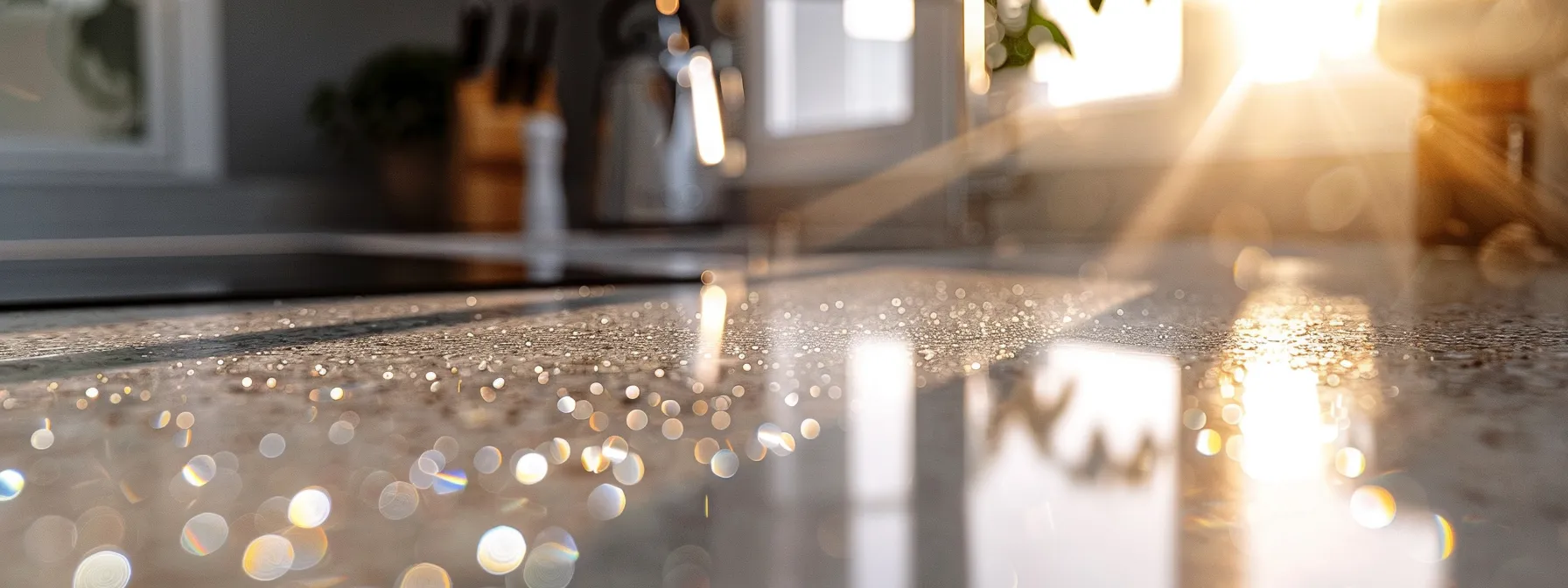
Comparing Quartz With Other Top Benchtop Materials
When considering benchtop resurfacing, understanding how quartz compares to other materials is essential. You will explore who emerges victorious in the debate of Quartz vs. Granite, as well as the pros and cons of Quartz vs. Marble. Additionally, learn why upgrading to quartz from laminate can be worthwhile, and discover how quartz stands out among engineered stones, particularly in relation to putty, steel, particle board, and shellac attributes.
Quartz vs. Granite: Which Is Better for Resurfacing?
When considering resurfacing options for your Bathrooms and Kitchens, comparing quartz and granite is essential. While both materials offer a high-end look, quartz provides superior durability and low maintenance. It resists scratches and chips effectively, ensuring your surfaces maintain their appeal, even with frequent use and cleaning.
Granite, though beautiful, can require more upkeep to prevent staining or damage. You may need to regularly apply sealants or special cleaners to granite surfaces, which can be a hassle in busy households. With quartz, a simple wipe down with a sponge and mild cleaner suffices, allowing you to focus more on enjoying your space than on maintenance.
Another advantage of quartz is its versatility in design. You can choose from a variety of colors and patterns that mimic wood grain to complement your cabinetry or drawer finishes. Unlike granite, which has limited customization options, quartz allows you to achieve a cohesive look throughout your kitchen or bathroom while staying within your budget and reducing the time required for upkeep.
Quartz vs. Marble: Weighing the Pros and Cons
When you compare quartz, such as Caesarstone, with marble for benchtop resurfacing, you’ll notice important differences in durability. Quartz offers superior strength, resisting scratches and chips better than marble. This durability means that quartz surfaces can withstand the everyday wear and tear of a busy kitchen or bathroom, allowing you to enjoy your investment longer without worrying about damage.
Another critical factor to consider is porosity. Marble is more porous than quartz, which can lead to staining and moisture retention if spills are not cleaned promptly. On the other hand, quartz, being a solid surface, is non-porous, making it less susceptible to stains and easier to maintain. You’ll find that choosing quartz provides a hassle-free cleaning experience, allowing you to focus on your cooking or bathroom tasks without the constant worry of upkeep.
In terms of aesthetic appeal, both options offer distinctive looks, but quartz provides a wider array of color and design choices. You can customize your quartz surface to match your specific decor, creating a cohesive and stylish environment. While marble has its classic beauty, quartz‘s versatility makes it a compelling option for homeowners seeking a modern, functional solution that aligns with their design vision and lifestyle needs.
Quartz vs. Laminate: An Upgrade Worth Considering
When considering an upgrade from laminate to quartz for your benchtops, it’s essential to recognize the differences in durability and maintenance. Laminate surfaces, while initially appealing due to their lower cost, lack the robust properties of quartz. As a mineral-based material, quartz provides a durable option that withstands daily wear and tear far better than laminate, which can easily chip or scratch, diminishing the look of your interior design over time.
An important factor to consider is sustainability. Quartz surfaces contribute to an environmentally friendly renovation due to their manufacturing process, which often utilizes recycled materials. This contrasts sharply with laminate, which typically includes petroleum-based products. By choosing quartz, you are investing in a surface that not only enhances the aesthetic appeal of your space but also aligns with eco-conscious values.
In addition to its environmental benefits, quartz offers versatility in design that laminate cannot match. With a multitude of colors and patterns available, you can select a quartz surface that complements your cabinets, flooring, and overall home décor. This customization helps create a cohesive interior design that elevates the style of your kitchen or bathroom, ensuring that your investment in quartz adds both beauty and function to your space.
How Quartz Stands Out Among Engineered Stones
When considering options for engineering stones, quartz stands out for its solid durability and resistance to daily wear and tear. Unlike other materials, quartz surfaces maintain their beauty without frequent repairs, making them ideal for busy environments, such as kitchens with active cooktops. This durability ensures that your investment lasts longer, providing peace of mind as you use your surfaces for cooking and entertaining.
The manufacturing process for quartz includes recycling materials, which contributes to its environmentally friendly appeal. By opting for quartz, you not only receive a highly functional surface but also support sustainable practices. This aspect allows you to feel good about your choice, knowing you are contributing to reduced waste and ecological balance in your home improvement projects.
Furthermore, quartz offers versatility in design, allowing you to select from a variety of colors and patterns that fit beautifully in any space. This adaptability ensures that your surfaces can complement various design aesthetics while remaining solid and resilient. Whether you aim for a modern or classic look, quartz provides the options you need to create a stunning environment tailored to your taste and lifestyle.
Now that you’ve weighed the benefits of quartz against other materials, consider how it can transform your space. Resurfacing your benchtop with quartz is a practical choice, and the steps are straightforward.
Steps to Resurface Your Benchtop With Quartz
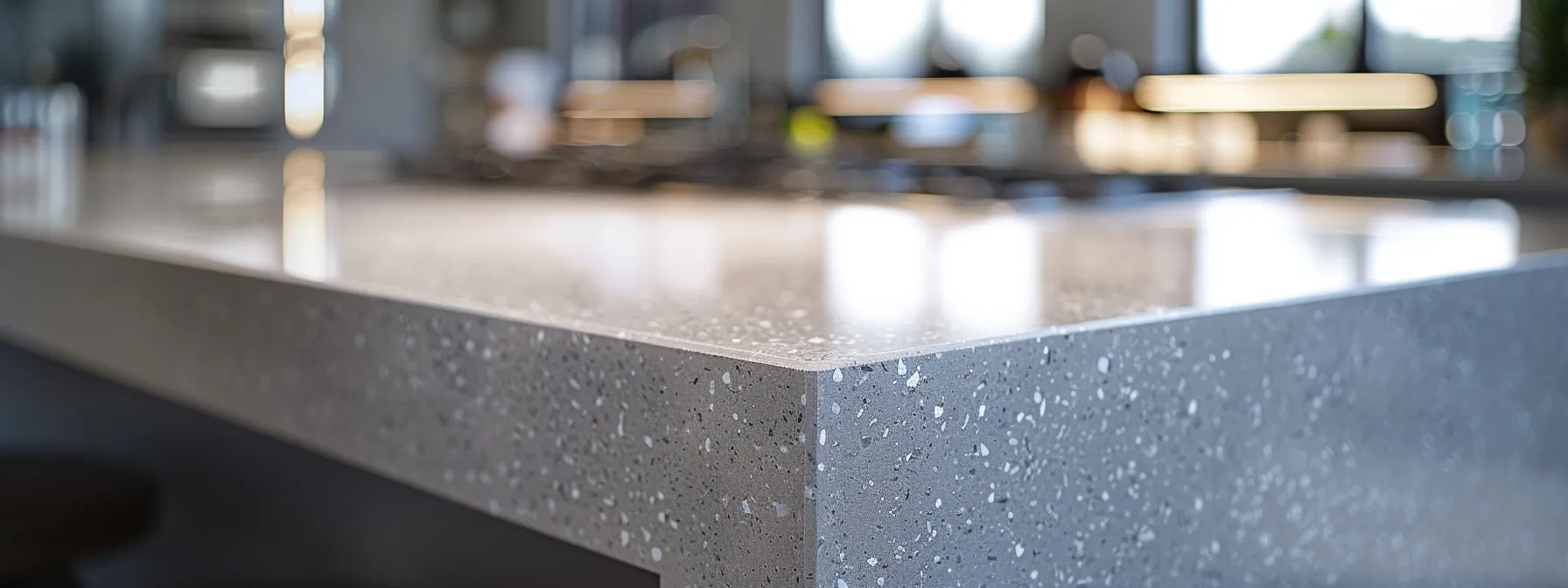
To successfully resurface your benchtop with quartz, begin by assessing the condition of your current surface. Next, choose the right quartz design and finish that fits your style, considering options like corian or polished concrete. Prepare your space for the resurfacing process, and follow an overview of the installation procedures. Finally, familiarize yourself with post-installation care tips to maintain the integrity of your new surface, including how to manage pigment changes under ultraviolet light.
Assessing Your Current Benchtop Condition
When assessing your current benchtop condition, start by examining the surface for any signs of damage, such as scratches or chips. These imperfections not only impact the aesthetic appeal of your kitchen or bathroom but can also serve as breeding grounds for bacteria. A benchtop that has been well maintained will likely enhance the longevity of your quartz resurfacing project.
Next, measure your benchtop area to determine the exact dimensions in metres. This measurement is crucial for selecting the right amount of quartz needed for your makeover. Identifying any uneven areas or imperfections will help you plan for adjustments, ensuring a smooth and minimalist finish when the resurfacing is complete.
Finally, consider the overall style of your existing benchtop and how it fits into your design vision. If your current surface clashes with your desired aesthetic, focusing on a quartz surface that aligns with minimalism can elevate the look of the space. By addressing these factors upfront, you set the stage for a successful and satisfying resurfacing process.
Choosing the Right Quartz Design and Finish
Choosing the right quartz design and finish for your benchtop is essential to ensure it aligns with your style preferences and the overall functionality of your kitchen or bathroom. You might consider materials with different textures or colors, such as those mimicking bamboo or polished finishes that offer a sleek, modern look. This decision impacts not only the visual appeal but also how well the surface withstands daily use and maintains its durability over time.
When selecting the finish, think about the long-term expense and maintenance requirements. Finishes like those with a polymer coating generally provide added protection against scratches and stains, making them a wise choice for busy households. You want a surface that will stand up to daily wear while still looking fresh and inviting for years to come.
Moreover, it’s wise to keep safety in mind during installation, especially if you’re applying finishes that emit fumes. Using a respirator during the process is a practical measure to ensure a safe environment. Taking these aspects into careful consideration will guide you toward a quartz benchtop that not only fits your aesthetic but also meets the practical demands of your home life.
Preparing Your Space for Resurfacing
Before you begin the resurfacing process, you need to prepare your space thoroughly. Start by clearing the area of any appliances, utensils, and decor that could get in the way. This ensures you have a clean workspace where you can focus on applying the new quartz surface without interruptions or distractions.
Next, inspect the existing benchtop for any imperfections or damage, such as scratches or chips. Addressing these issues beforehand will help the sealant adhere properly when you apply the new quartz surface. Make sure to clean the area to remove any debris or old sealant that could interfere with the bonding process.
Finally, gather all necessary tools and materials before you begin installation. Having everything from quartz slabs to sealant and safety gear ready will streamline the process and help you avoid delays. Consider creating a checklist of items you need, which will aid you in staying organized during your resurfacing project:
- Quartz slabs
- Sealant
- Safety gear (gloves, respirator)
- Cleaning supplies
- Installation tools (screwdriver, level)
Installation Process Overview
Beginning the installation process for your quartz benchtop requires careful preparation to ensure a successful outcome. Start by making sure your workspace is clean and free from any obstacles. Remove appliances and decorating items that might interfere with the installation. Checking and prepping the existing surface for any damage will also help the new quartz adhere properly, maximising durability and visual appeal.
Next, cut your quartz slabs to size according to your measurements. This step may involve precise cutting tools, so ensure you have the necessary equipment ready. As you work, pay attention to the edges and corners, as these areas require a clean finish to ensure a seamless look once installed. You can also consult with professionals, especially if you are unsure about the cutting techniques, to help prevent costly mistakes.
Finally, applying the quartz slabs to your benchtop is a straightforward process. Use a strong adhesive to bond the slabs to the surface underneath, following the manufacturer’s instructions closely. Ensure you apply even pressure across the surface to prevent air pockets and ensure a solid attachment. Allow the adhesive to cure for the recommended time before applying any sealants, as this will enhance the longevity and performance of your new quartz surfaces.
Post-Installation Care Tips
After installing your new quartz benchtop, proper care is essential to maintain its appearance and functionality. Start by cleaning the surface regularly with a mild cleaner and a soft cloth. Avoid using harsh chemicals or abrasive pads that can damage the finish, ensuring that your quartz remains bright and attractive over time.
It’s important to address spills promptly to prevent staining. While quartz is stain-resistant, substances like red wine or oil can still leave marks if not cleaned right away. Always wipe up any messes immediately with a damp cloth and mild cleaner to keep your surface looking pristine and to support the longevity of your investment.
To further enhance the durability of your quartz benchtop, consider applying a protective sealant every few years. This added layer of protection can help resist scratches and ensure your benchtop maintains its beauty through daily use. By following these care tips, you can enjoy your stunning quartz surfaces for many years to come:
- Regularly clean with a mild cleaner.
- Wipe up spills immediately to prevent staining.
- Apply protective sealant every few years.
You’ve seen how to resurface your benchtop with quartz. Now, let’s look at real-life stories where this choice changed kitchens for the better.
Real-Life Success Stories of Quartz Resurfacing
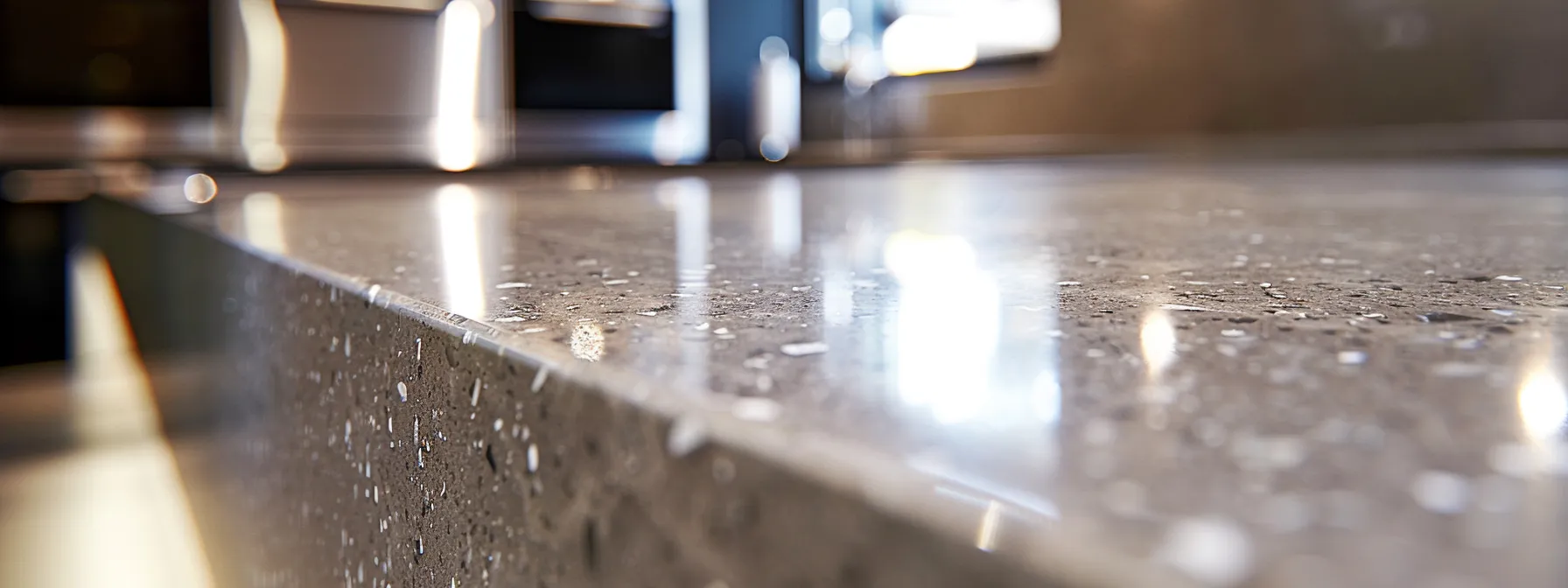
Transforming a dated kitchen into a modern space is one of the many benefits you can achieve with quartz resurfacing. This section highlights how quartz benchtops not only enhance aesthetics but also increase home value. You will find customer testimonials and experiences that illustrate the positive impact of quartz, showcasing its practical advantages and long-lasting appeal.
Transforming a Dated Kitchen Into a Modern Space
Transforming a dated kitchen into a modern space often starts with choosing the right materials, and quartz resurfacing can make a significant difference. You might find that updating your benchtop with quartz not only enhances the aesthetic appeal but also improves functionality. By opting for quartz, you benefit from a durable surface that resists scratches and chips, ensuring your kitchen maintains its fresh look for years to come.
Many homeowners have experienced the striking visual impact of quartz in their kitchen renovations. For instance, you may choose a light-colored quartz that brightens the space, creating an inviting atmosphere. This upgrade not only modernizes your kitchen but also adds value to your home by offering a timeless design that appeals to potential buyers.
Incorporating quartz resurfacing into your kitchen remodel provides an opportunity to personalize your space. You can select from a wide range of colors and patterns that complement your cabinetry and decor. This customization makes your kitchen truly yours, transforming an outdated area into a stylish, functional space that meets the demands of modern living.
Increasing Home Value With Quartz Benchtops
Investing in quartz benchtops can significantly increase the value of your home. When potential buyers see stunning quartz surfaces, they often perceive high-end quality and durability, which can set your property apart in a competitive real estate market. This visual appeal, combined with quartz‘s strength and low maintenance, makes your home more attractive to buyers looking for lasting value.
Many homeowners have witnessed impressive returns on investment after upgrading to quartz surfaces. In renovations where quartz was added, homes not only sold faster but also at higher prices compared to similar homes without quartz features. By choosing quartz for your benchtops, you make a strategic decision that aligns with market trends, ultimately enhancing the overall resale value of your property.
Moreover, the versatility of quartz allows you to personalize your space, reflecting modern design trends that appeal to many buyers today. Whether you opt for a sleek, polished finish or a textured look, quartz surfaces elevate your kitchen or bathroom’s aesthetic, making them more desirable. This careful selection can help potential buyers envision themselves in your home, leading to quicker sales and greater appreciation over time.
Customer Testimonials and Experiences
Many homeowners have expressed their satisfaction with quartz resurfacing, noting its ability to transform their spaces significantly. One customer shared how upgrading to a quartz benchtop rejuvenated their outdated kitchen, making it feel fresh and modern. The durability and low maintenance of quartz allowed them to enjoy their new kitchen without the constant upkeep required by traditional materials.
Another homeowner highlighted the convenience of quartz, stating it made their cooking experience more enjoyable. They appreciated the ease of cleaning and resistance to scratches, which means they can focus on preparing meals instead of worrying about damaging the surfaces. This practical choice has allowed them to balance style and functionality effortlessly in their home.
Customer feedback frequently emphasizes the aesthetic appeal of quartz. One client noted that the variety of colors and designs available helped them create a cohesive look throughout their kitchen and bathroom. The upgrade not only elevated their home’s beauty but also significantly increased its market value, proving the pragmatic benefits of investing in quartz resurfacing:
Conclusion
Exploring the advantages of quartz for benchtop resurfacing reveals its exceptional durability, low maintenance, and aesthetic versatility. By choosing quartz, you ensure a long-lasting surface that withstands the demands of busy kitchens and bathrooms while enhancing the overall design. Additionally, quartz surfaces contribute to a sustainable renovation, promoting healthier indoor environments. Investing in quartz not only elevates your space but also adds significant value to your home, making it a wise choice for any remodeling project.
